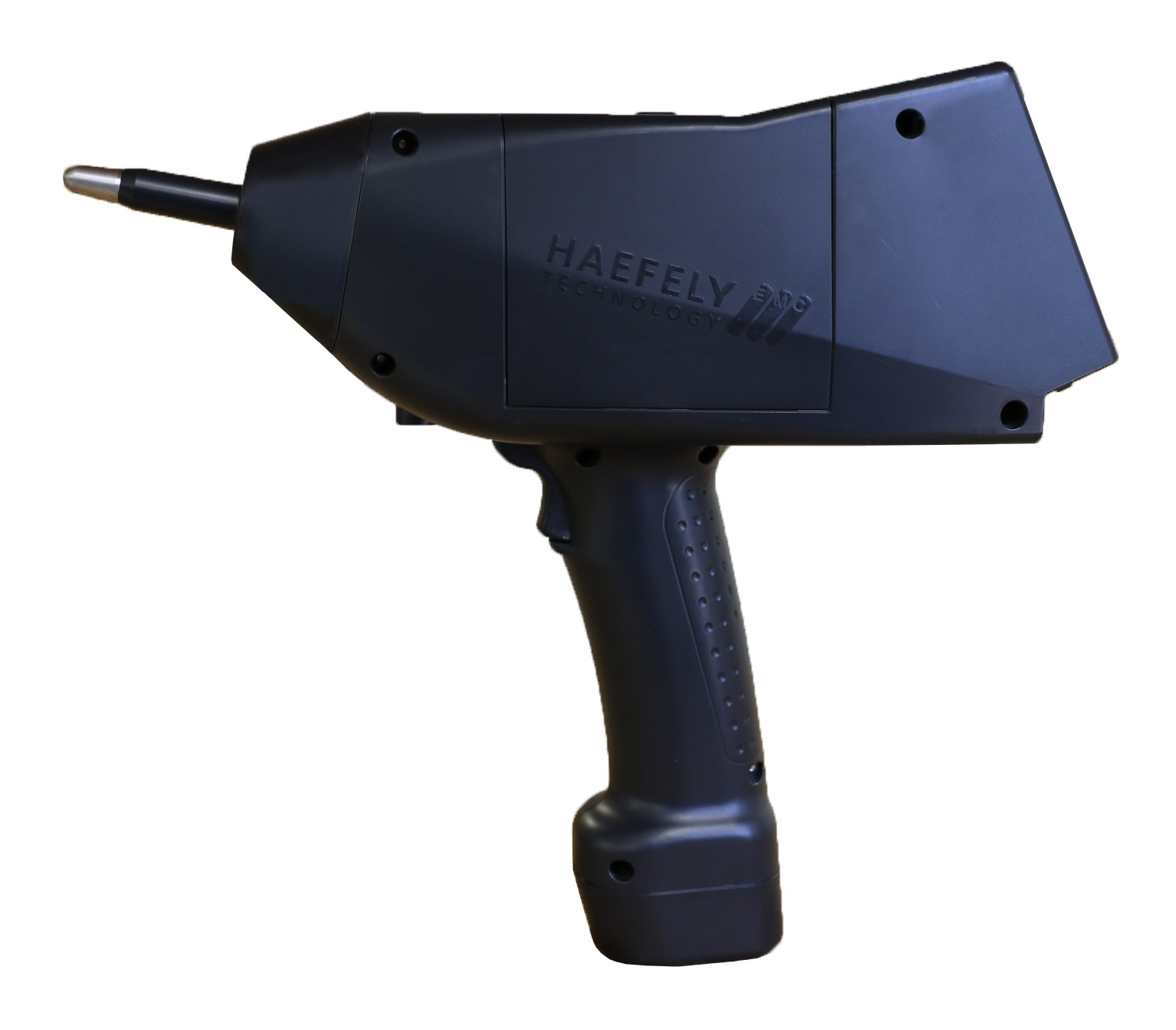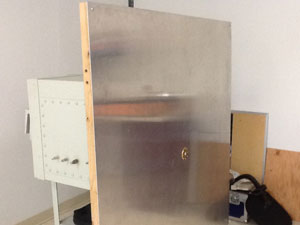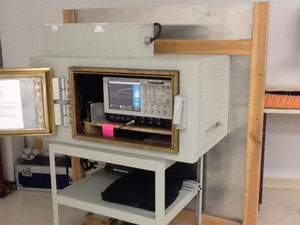
IEC
IEC 61000-4-2: Electrostatic Discharge Immunity Test
Standard Overview
Preview Standard Buy Standard
IEC 61000-4-2 is an international test standard that outlines electromagnetic immunity requirements for electronic equipment when exposed to electrostatic discharge (ESD) generated from a human body or metal objects. The standard assumes that the source is an electrified human body discharge and testing simulates the current waveform generated in those conditions.
| Level | Test Voltage (Contact Discharge) | Test Voltage (Air Discharge) |
|---|---|---|
| 1 | 2 kV | 2 kV |
| 2 | 4 kV | 4 kV |
| 3 | 6 kV | 8 kV |
| 4 | 8 kV | 15 kV |
Recommended Bundle
For All 30 kV Regulated Applications: |
+ |
 |
+ |
 |
| Haefely ONYX 30 KV ESD Simulator |
Brandenburg 149-01 High Voltage Meter |
LeCroy WavePro 960 Digital Oscilloscope |
Discharge Current Waveform
The ESD discharge simulator (ESD Gun) must meet the following specifications:- Energy Accumulation Capacity: 150 pF (typical)
- Discharge Resistance: 330 Ω (typical)
- Charging Resistance: 50 MΩ - 100 MΩ
- Output Voltage: 8 kV for contact discharge, 15 kV for air discharge
- Tolerance: ±5%
- Polarity: Positive and Negative
- Hold Time: >= 5 Sec.

Testing Your ESD Gun
The following characteristics in the table below must be verified to ensure proper test results:| Level | Indicated Voltage | 1st peak Current of discharge (±15%) | Rise Time (±25%) | Current at 30ns (±30%) | Current at 60ns (±30%) |
|---|---|---|---|---|---|
| 1 | 2 kV | 7.5 A | 0.8 ns | 4A | 2A |
| 2 | 4 kV | 15 A | 0.8 ns | 8A | 4A |
| 3 | 6 kV | 22.5 A | 0.8 ns | 12A | 6A |
| 4 | 8 kV | 30 A | 0.8 ns | 16A | 8A |
ATEC is the largest rental company that is ISO 17025 accredited to calibrate ESD discharge guns. Testing and verifying the output of an ESD gun is an important first step in the test process due to the slew rate, peak bandwidth, peak energy, and unintended capacitive and inductive coupling (in addition to proper grounding).
To check an ESD simulator's output, you must measure the waveform of the resulting current across a low-impedance, high-frequency resistive shunt connected to the ground. The target mounts in the center of a 1.2-m2 ground plane and must have VSWR of less than 1.22 and an insertion loss of less than 0.3 dB up to 4 GHz.


IEC 61000-4-2 also specifies that you place the measurement oscilloscope inside a Faraday cage to shield it from the radiated ESD pulse. You will also need good-quality low-loss cables between the target, attenuators, and the oscilloscope. To comply with the IEC standards you should keep the total cable length less than 1 m, and a double-shielded cable that prevents signal leakage from affecting your measurement is strongly recommended.
EUT Test Setup
The direct discharge test simulates the human body model of electrostatic discharge and must be set up to recreate similar conditions. It is important to make sure that you have the proper grounding system in place before you begin testing. When using a tabletop for testing, you want to have a horizontal coupling plane on top of the table but below an insulation sheet. This should be connected to a ground reference plane on the floor using a 2 x 470kΩ bleed resistor cable as shown:
If the EUT is too large for a tabletop, place the EUT on an insulation pallet that is at least 0.1m in height. For the indirect contact discharge part of the test, a vertical coupling plane should be set up 10cm from the EUT, and also connected to the ground reference plane using the bleed resistors. Once set up, a power supply should be connected to the EUT and ESD gun. It is important to make sure that the room where the test is conducted is at a temperature of 15°C to 35°C and relative humidity is between 30% and 60%.
The test procedure is rather simple. For direct discharge, place the ESD gun to the point of test on the EUT, and discharge at 1-second intervals. This should be performed at least 10 times at both positive and negative polarities, and results recorded. For an indirect discharge test, the same process is repeated except that the discharge goes to the vertical or horizontal coupling plane, rather than directly to the EUT. Multiple discharge points may be required for testing, depending on the EUT.
The results are classified in 4 ways:
- Normal operation within the tolerance of specification
- Temporary degradation or loss in operation or function, which is able to be recovered by self-recovery function
- Temporary degradation or loss in operation or function, which needs to be recovered by user intervention or system reset.
- Damage of the system or software, and unrecoverable degradation and loss of function or data.
ATEC offers a variety of ESD guns from Teseq, Keytek, Haefely, and others. There are many other ESD test standards that we support. To meet these standards, ATEC has a large variety of discharge modules needed to cover your various testing needs.
| Standard | Discharge Module |
|---|---|
| IEC 61000-4-2 | 150pF/330 Ohm |
| ISO 10605 | 150pF/2000 Ohm 330pF/2000 Ohm 330pF/330 Ohm |
| SAEJ1113 | 150pF/2000 Ohm 330pF/2000 Ohm |
| ANSI C63.16 | 150pF/330 Ohm 150pF/15 Ohm 150pF/75 Ohm |
| MIL-STD-464 | 500pF/500 Ohm |
| MIL-STD-883 | 100pF/1500 Ohm |
| JASO D001-87 | 150pF/500 Ohm |
| Chrysler PF9326/LP388 | 100pF/500 Ohm |
Contact ATEC today and our rental agents will guide you to the ideal equipment to complete your test.
Learn More About EMC Testing
Products Used in Testing

Teseq NSG 438 ESD Gun
- Voltage: 30kV
- Contact Discharge: 200V - 30kV
- Air Discharge: 200V - 30kV


EM Test ESD NX30 | 30 kV
- Test voltage up to 30 kV for air and contact discharge
- Color touch display
- Discharges up to 25 Hz


Haefely ONYX 30 Electrostatic Discharge Simulator
- Voltage: 30kV
- Air Discharge: 1kV - 30kV
- Contact Discharge: 1kV - 30kV


Haefely ONYX 16 Electrostatic Discharge Simulator
- Voltage: 16kV
- Contact Discharge: 1000V - 16,000V
- Air Discharge: 1000V - 16,000V


EMC Partner ESD3000 ESD Gun
- Voltage: 16kV, 30kV
- Contact Discharge: 1kV - 30kV
- Air Discharge: 1kV - 32kV

M Precision Laboratories MZ-15/EC MiniZap
- Voltage: 15kV
- Contact Discharge: ±0.5 - 8kV
- Air Discharge: ±0.5 - 15kV


EMC Partner IMU-MGE Conducted Immunity Test System
- Surge / CWG 4kV / 5 kV / 6kV / 8kV
- Ring Wave 6kV / 8kV
- EFT 4kV / 5kV / 6kV / 7kV